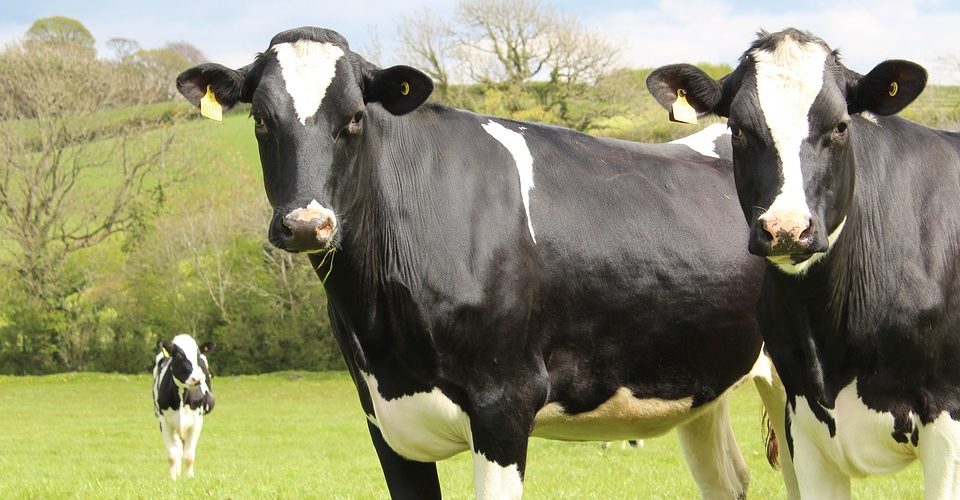“I’m responsible for making sure that the land and natural resources are at least in as good of – if not better- shape than when I started taking care of it,” said Dean Fish who manages a ranch along the U.S.-Mexico border in Nogales. “[It] all goes back to sustainability because I don’t want to do this for one year, I want to continue to do it and I also want to improve the productivity of the rangeland.”
Ranching is often attributed to deforestation and other environmental issues such as overgrazing and water pollution. However, Arizona ranchers are incorporating science to help create sustainable cattle congregations.
Last year, Michigan State University (MSU) evaluated adaptive multi-paddock (AMP) — or the practice of using high livestock densities for short durations between periods of forage rest to catalyze accelerated grass growth — grass-fed operations and grain-fed, feedlot herds and found that cattle production can be beneficial to the environment.
“Globally, beef production can be taxing on the environment, leading to high greenhouse gas emissions and land degradation,” Jason Rowntree, MSU associate professor of animal science, who led the study said. “Our four-year study suggests that AMP grazing can potentially offset greenhouse gas emissions, and the finishing phase of beef production could be a net carbon sink, with carbon levels staying in the green rather than in the red.”
Fish, who grew up on a ranch, knew from an early age that he wanted to work in agriculture.
He received a bachelor’s and master’s in Animal Science and then worked at the University of Arizona (UA) in applied-sciences.
Now, Fish uses a mix of cultural knowledge and science to keep the ranch sustainable.
“You have to integrate the cultural knowledge about a piece of land with science,” Fish said. “[Looking at] the people who have worked that land, the ways that they have utilized it and grazed it; taking that into account because they’ve had the experience and knowledge of how that’s worked [and] blending that with science is the key.”
Fish has a three-prong sustainability ideology that includes using science to keep the ranch environmentally, economically, and socially sustainable.
Environmental
Environmental sustainability is making sure the ranch is doing the best thing for the land. This includes improving the land and wildlife so that the ranch can be equally as productive the next year.
According to UA, grazing land is 73 percent of Arizona’s total land area.
“If ranchers didn’t take care of the environment, they wouldn’t have anywhere to raise their cattle,” Lauren Scheller Maehling, Arizona Beef Council executive director, said. “Ranchers are environmentalists by every sense of the word. The original environmentalists because without a healthy environment on the ranch, we would not be able to raise healthy animals.”
Economic
Economically ranches need to remain profitable and efficient.
The UA reports that in Arizona, the total market value of capital assets of Arizona beef cattle operations is more than $5.2 billion and the beef industry contributed $431 million to Arizona’s GDP in 2013.
“You can’t manage what you don’t measure. That’s what science allows us to do, it allows us to measure the change. We come up with a hypothesis and we test that hypothesis and we’ll either prove or disprove it and change our management actions accordingly,” Fish said.
Every fall Fish’s ranch counts and identifies the types of grass that cover their ground and how well they are utilizing it. His ranch now has 39 years of collected data that allows him to track patterns.
“That science has allowed me to know over a period of time how many cows can sustainably be grazed on that piece of land without having detrimental effects on natural resources. That’s how we manage it, we measure what we have, measure what we utilize and make sure that there’s always access,” he said.
Social
“[This] is not so much science-based [but] there’s a social aspect I have to be conscious of,” Fish said. “People want to know where food comes from and how it’s raised. So, I need to make sure that all my practices would be socially acceptable if someone who didn’t know about ranching came out and saw…how I interact with my cattle and the wildlife.”
According to Fish, in recent years the connection between ranchers and consumers has grown. Today, ranchers demonstrate their responsibility to customers by creating beef quality assurance programs, handling their animals and natural resources consciously, and providing animal health backgrounds.
According to the Arizona Beef Council, there are one million cattle and calves in Arizona, ranking us 31st in the nation. For more information about the cattle industry, click here.
















Add comment